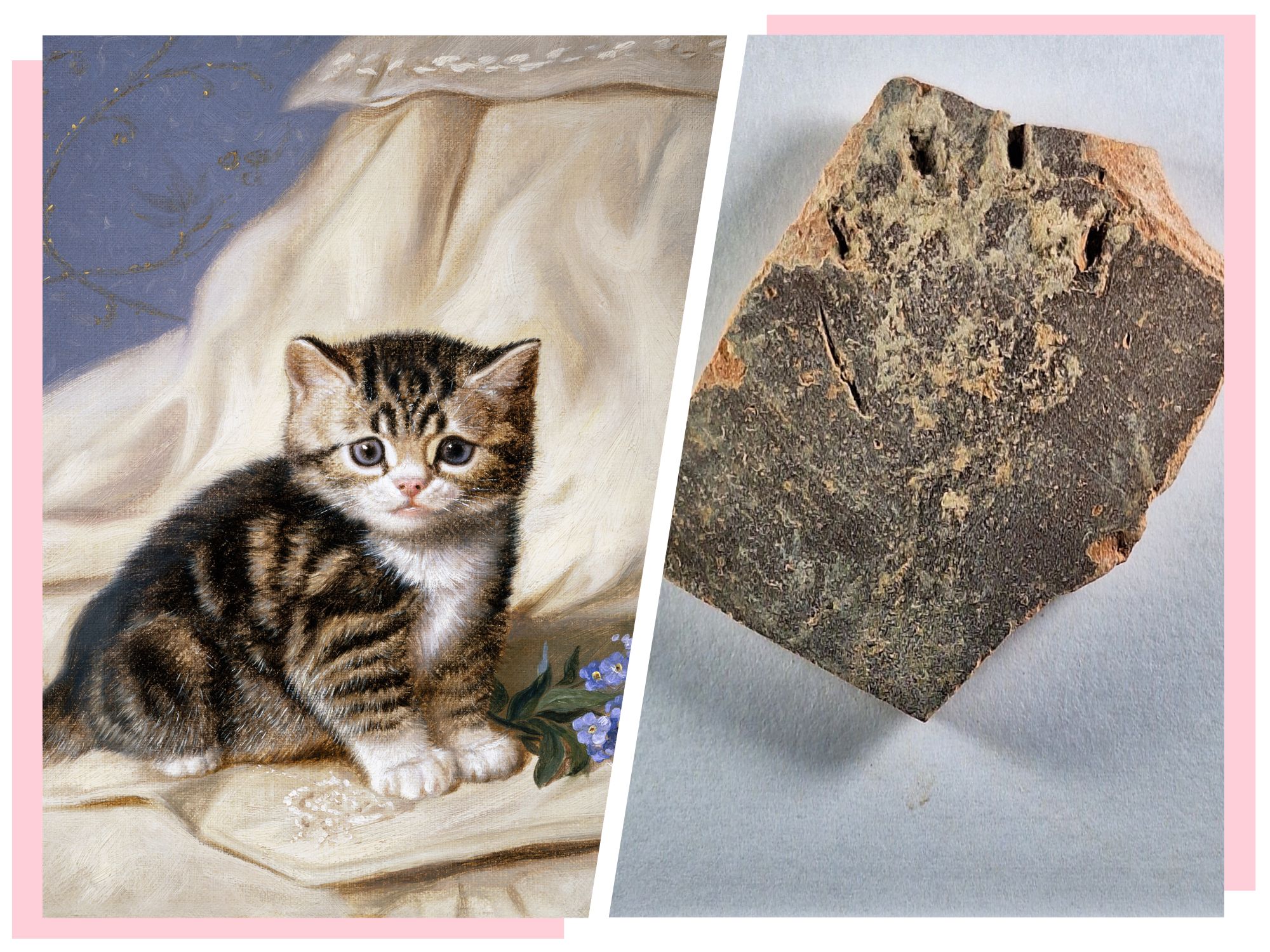
For as long as cities have stood, cats have loyally carried out their feline duties. One recent find from ongoing digs at Mount Zion, just outside Jerusalem’s Old City, offers yet another bit of proof around this truth—a pottery shard bearing the earliest known imprint of a cat kneading with kitten-like bliss.
Since 2007, the University of North Carolina at Charlotte’s history department chair Shimon Gibson has partnered with Rafael Y. Lewis from Israel’s Bar-Ilan University on excavations at Mount Zion. Within that time, their efforts have turned up many thousands of artifacts, including coins, pottery, stone objects, animal bones, and shells.
An aerial view of the site. Image: Shimon Gibson.
All of these treasures eventually make their way to the team’s nearby Loy Witherspoon Mount Zion Laboratory, where processing can take years, as Gibson told me via email. There, laboratory director Gretchen Cotter recently noticed an unusual imprint upon one otherwise unassuming rectangular shard belonging to a vessel that once likely held wine, water, or olive oil.
Cat paws have repeatedly appeared throughout ancient earthenware, particularly Roman roofing. Here, however, a cat left unprecedented gouges from its extended claws—along with an imprint of its foreleg—alluding that this feline didn’t just happen to traipse over the now-shattered vessel. Instead, these attributes evidence that the cat paused here to knead the clay as it dried out before entering the kiln, in an act of contentment that cats practice throughout their lives, long after they’ve stopped kneading at their mother to get her to produce milk.
The cat claw pottery shard. Courtesy of Shimon Gibson.
“Interestingly, the paw print indicates that the small cat probably reclined on the curving edge of the jug, likely basking in the sun,” according to a statement Gibson also provided over email. “The claw markings were still evident, cut deeply into the clay, perhaps to allow the cat to hold on to the jug surface, and we can only [imagine] that it was purring as it soaked up the Jerusalem sun.”
Experts estimate the jug itself hails from approximately 750 C.E., during the rule of the Abbasid Caliphate, based on other relics unearthed nearby, as Live Science notes. Although that period aligns with the Golden Age of Islam, Jerusalem remained a multicultural hub for Jewish people and Christians, as well as Muslims, who historically adored cats so much that they let them enter mosques.
A diagram of the shard. Image: Shimon Gibson.
At present, Gibson said there’s no clues regarding which cultural background the potter behind this shard may have belonged to; for now, it is headed for safekeeping with the governmental authorities. “We will make a detailed search of all the other pottery sherds from this layer,” Gibson told me. “Who knows what we may find.”
“Just yesterday,” he continued, “we found a sherd of a vessel from another period altogether (Iron Age, 7th century B.C.E.), with the talon marks of a bird that hopped across the surface of a pottery vessel while it was still drying.”